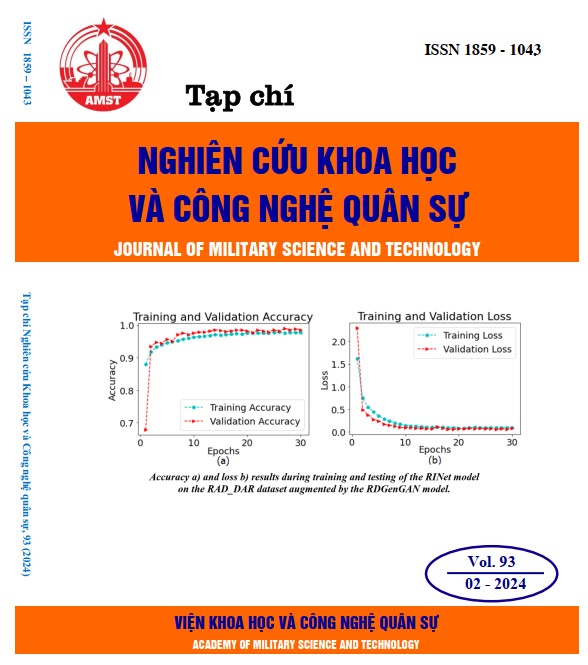Research on building method of measuring the allowable slippage coefficient to serve the design of non-geodesic wound filamentary composite shell of revolution
354 viewsDOI:
https://doi.org/10.54939/1859-1043.j.mst.93.2024.163-170Keywords:
Slippage coefficient; Allowable slippage coefficient; Non-geodetic winding; Composite shell of revolution.Abstract
Composite structures obtained by winding methods (cylinder, sphere, torus, etc.) are used in many fields. To form the structure, the fibers are impregnated with resin and spread onto the mandrel in a geodesic or non-geodetic trajectory. The non-geodetic trajectory of the fiber is an unbalanced trajectory, i.e., the fiber has a tendency to slip transversely. The slippage tendency of fiber is assessed by the slippage coefficient (l), which is the ratio between the geodesic (kg) and the normal curvature (kn), l = kg/kn. When the value of l is bigger than the allowable value ([l]), the fiber will be slipped. In this paper, from the fiber trajectory theory, a method of measuring the allowable slippage coefficient is built, and at the same time, the error prediction is due to the influence of the fiber width. Since then, the winding mandrel has been designed and made of POM plastic for experiments. Experiments were carried out on the winding machine MQC-01CT, the winding material is glass fiber with a width of 6 mm wetted with epoxy resin. The results show the average allowable slippage coefficient [l] = 0,195 with error Dλ = 0,063%. The results are the basis for determining the allowable slippage coefficient in different cases of composite and mandrel materials. At the same time, the measured values are the basis for calculating the structure and technology of winding the corresponding composite materials.
References
TÀI LIỆU THAM KHẢO
[1]. Dinh Van Hien , Tran Ngoc Thanh , Vu Tung Lam , Tran Thi Thanh Van , Le Van Hao . "Design of planar wound composite vessel based on preventing slippage tendency of fibers". Compos. Struct. 254, 71–78, (2020). DOI: https://doi.org/10.1016/j.compstruct.2020.112854
[2]. Zu, L.; Xu, H.; Zhang, Q.; Jia, X.; Zhang, B.; Li, D. "Design of filament-wound spherical pressure vessels based on non-geodesic trajectories". Compos. Struct. 218, 71–78, (2019). DOI: https://doi.org/10.1016/j.compstruct.2019.03.045
[3]. S. Neunkirchen1, R. Schledjewski1, "Determination of the friction coefficient in dry-fiber filament winding", ECCM18 - 18th European Conference on Composite Materials, (2018).
[4]. Gray A, "Modern differential geometry of curves and surfaces", Boca Ration: CRC press; (1993).
[5]. Sotiris Koussios, Otto K. Bergsm. "Friction Experiments for Filament Winding Applications", Delft University of Technology, Kluyverweg 1, 2629.
[6]. G. Di Vita, M. Grimaldi, M. Marchetti, and P. Moroni. "The Filament Winding Manufacturing Technique: Studies on the Determination of the Friction Coefficient and on the Optimization of Feed-Eye Motion". Advanced Materials: Looking ahead to the 21. century. International SAMPE Technical Conference. Boston, MA, (1990).







